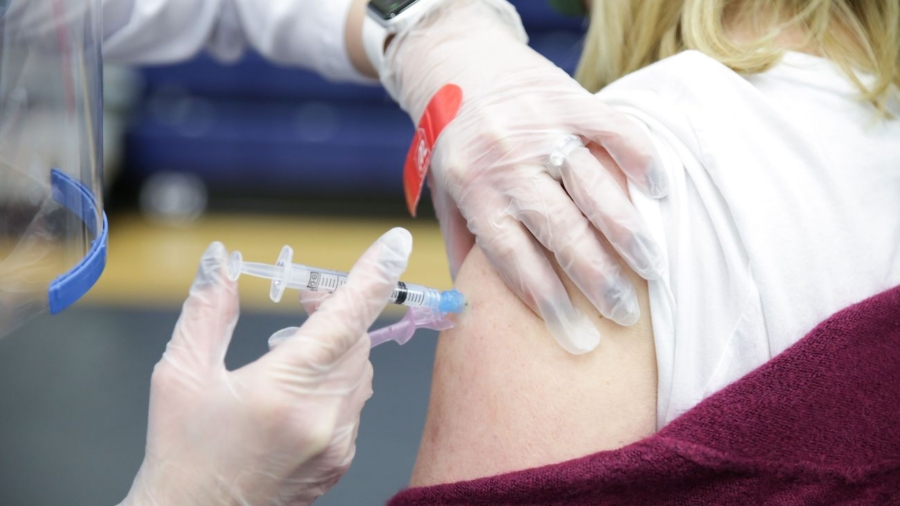Over 10,000 COVID-19 infections among people who are fully vaccinated against the virus that causes the disease have been reported to a U.S. health agency by states.
Through April 30, 10,262 so-called breakthrough infections were reported from 46 U.S. states and territories to the Centers for Disease Control and Prevention (CDC).
Breakthrough cases refer to cases appearing two or more weeks after a person’s final shot. That is primarily the second Pfizer or Moderna dose, but can be the single-shot Johnson & Johnson vaccine.
Of the cases, over 6 in 10 occurred in females, with the median patient age being 58, according to a new report from the CDC, which stopped counting all breakthrough infections as of May 1 except for those that cause hospitalization or death.
Approximately 10 percent of the patients required hospital care and 160, or 2 percent, died.
Data indicate that about 3 in 10 hospitalized patients were admitted for a reason unrelated to COVID-19 or with no symptoms.
The median age of those who died after getting vaccinated was 82 years. Twenty-eight deaths were pegged to a cause unrelated to COVID-19 or occurred in patients who displayed no symptoms.
Sequencing data were available for 555 of the breakthrough cases. Over 60 percent were identified as stemming from variants, including the B.1.1.7 variant first identified in the United Kingdom.
Through April 30, approximately 101 million people in the United States had been fully vaccinated against the CCP (Chinese Communist Party) virus., which causes COVID-19.
The CDC said the latest breakthrough data indicates infections occur in just a “small fraction” of vaccinated persons.
“The number of COVID-19 cases, hospitalizations, and deaths that will be prevented among vaccinated persons will far exceed the number of vaccine breakthrough cases,” researchers wrote.
However, the agency also acknowledged the numbers it released are subject to at least two limitations.
“First, the number of reported COVID-19 vaccine breakthrough cases is likely a substantial undercount” because the data come from a national surveillance system that relies on passive and voluntary reporting, and because many people with breakthrough infections might not seek testing, particularly those who show no symptoms.
Additionally, sequence data are only available for a small proportion of the cases that were reported.

The CDC is working on clinical studies to evaluate vaccine effectiveness and will keep collecting information on breakthrough infections.
Dr. Ashish Jha, dean of the Brown University School of Public Health, said the report indicated the three vaccines authorized for emergency use in the United States work well.
“These vaccines are way better than I would have predicted a year ago but they’re not 100 percent. Nothing in life is 100 percent. So, yeah, we’re going to see some breakthrough infections, exceedingly rare, and exceedingly rare that you’re going to get sick if you get infected,” he said on ABC.
Approximately two more weeks of submissions from 47 states and territories showed 353 deaths among the fully vaccinated, with 1,811 hospitalizations, according to the CDC.
The CDC stated in April that there is “no evidence that vaccination contributed to patient deaths” reported by the Vaccine Adverse Event Reporting System.
The CDC’s report came out the same day researchers not affiliated with the university said in a pre-peer review study that variants of concern are overrepresented among breakthrough infections they studied in Washington state.
Every single one of 20 such cases at the researchers’ institution, the University of Washington, were classified as variants of concern, including 40 percent as B.1.427, known by some as the California variant.
The researchers, who received funding from the National Institutes of Health, said they found in analyzing over 5,000 contemporaneous samples sequenced in their laboratory that variants of concern were “significantly 32 enriched among breakthrough infections.”
From The Epoch Times

